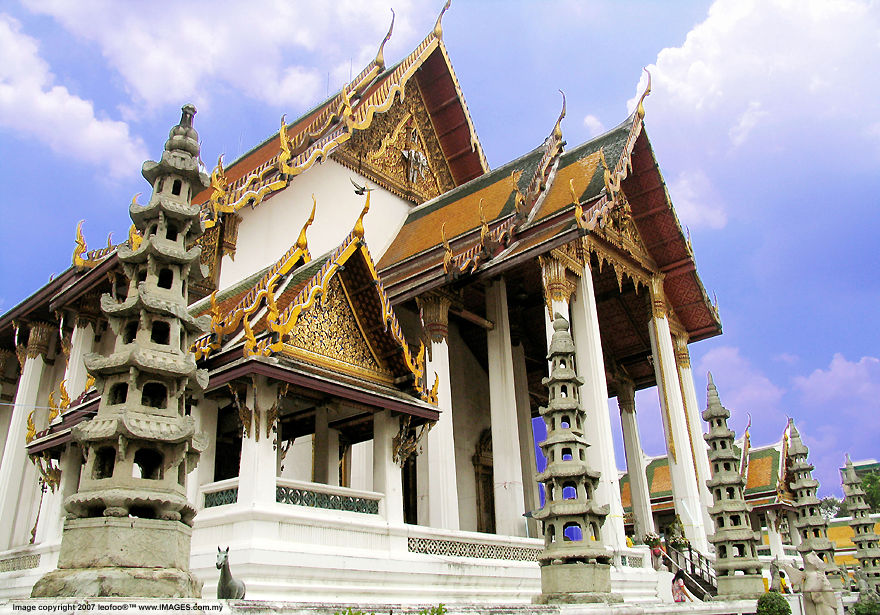A Royal Legacy
The Birth of a Masterpiece
Wat Suthat Thepwararam Ratchaworamahawihan, commonly known as Wat Suthat, stands as a testament to Thailand’s rich cultural heritage. This first-grade royal temple, one of only ten in Bangkok, began its journey in 1807 under the visionary reign of King Rama I. The temple’s construction, spanning several decades, reached completion in 1847 during King Rama III’s rule, showcasing the meticulous craftsmanship and architectural brilliance of the Rattanakosin era.
Architectural Marvel
A Harmonious Blend of Styles
Wat Suthat’s architecture seamlessly merges traditional Thai elements with Chinese influences, creating a unique aesthetic that captivates visitors. The temple complex features an impressive ubosot (ordination hall) renowned for its length and intricate interior decorations. Walls adorned with murals depicting Buddhist stories surround a magnificent seated Buddha image, inviting contemplation and reverence.
Cultural Significance
A Symbol of Royal Authority and Devotion
Beyond its architectural splendor, Wat Suthat serves as a powerful symbol of royal authority and religious devotion. The temple houses the revered Phra Sri Sakyamuni, a colossal bronze Buddha statue originally from Sukhothai, further cementing its status as a prominent religious center. This sacred space reflects the transformative period of the young Chakri dynasty and continues to play a vital role in Thailand’s spiritual landscape.
Iconic Landmarks
The Giant Swing and Beyond
Adjacent to Wat Suthat stands the iconic Sao Ching Cha, or Giant Swing, a towering red teak structure that once played a central role in Brahmin ceremonies. This landmark not only enhances the temple’s historical narrative but also symbolizes balance and harmony. The temple’s vihar (chapel) showcases exquisite craftsmanship through its delicately carved wood and stucco decorations, further exemplifying the site’s artistic significance.
A Living Legacy
Preserving Thailand’s Heritage
Today, Wat Suthat continues to serve as both a serene retreat for worshippers and an enlightening destination for tourists eager to explore Thailand’s spiritual and cultural tapestry. Its ongoing preservation ensures that future generations can experience the awe-inspiring beauty and profound historical significance of this Bangkok treasure.
Visitor Experience
Immersing in Thai History and Art
Visitors to Wat Suthat are treated to a unique journey through Thai history and art. The temple’s walls, adorned with intricate murals, tell stories of Buddha and Thai folklore, offering insights into the country’s rich cultural heritage. The harmonious blend of Thai and European architectural elements provides a visual feast, showcasing the kingdom’s artistic evolution over time.









